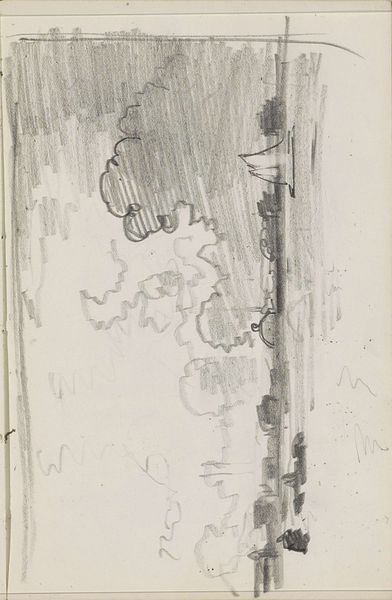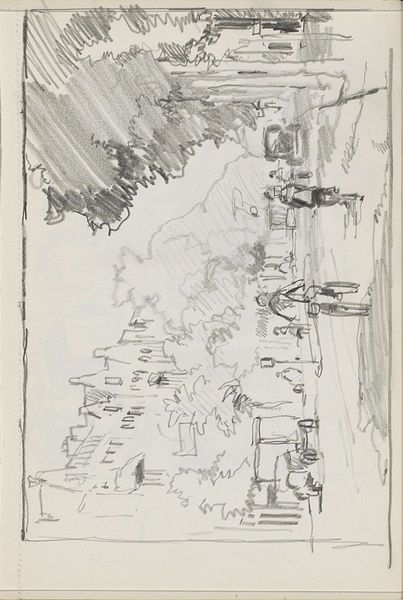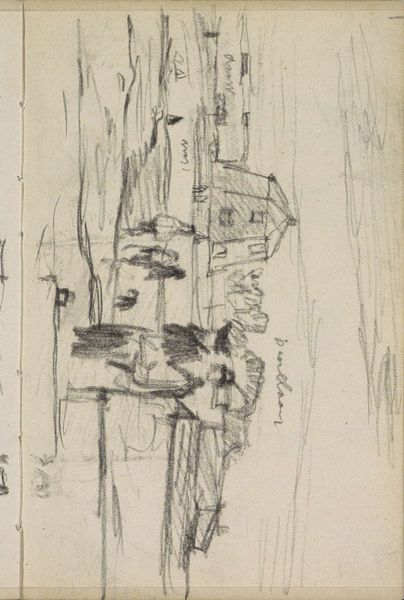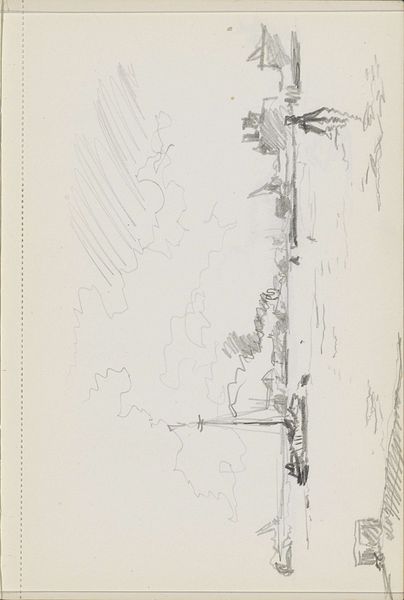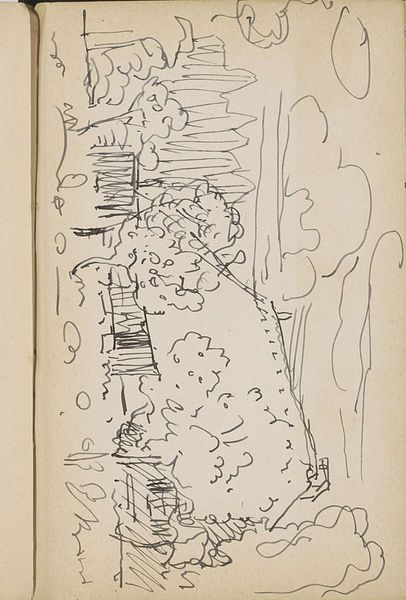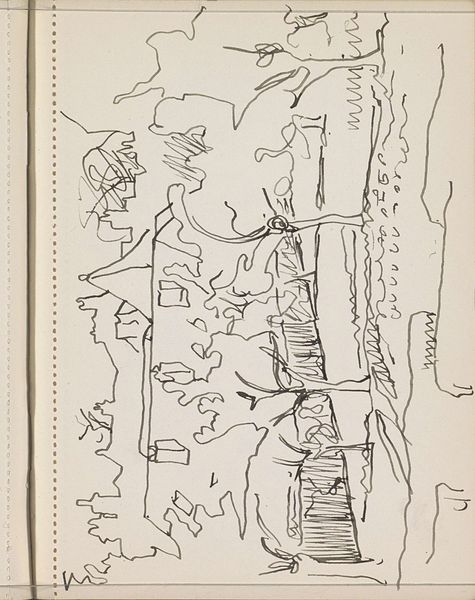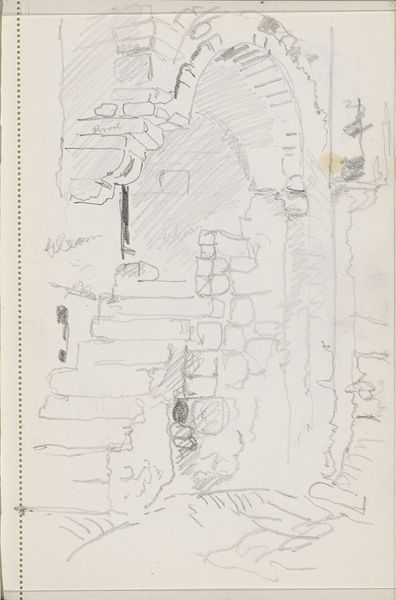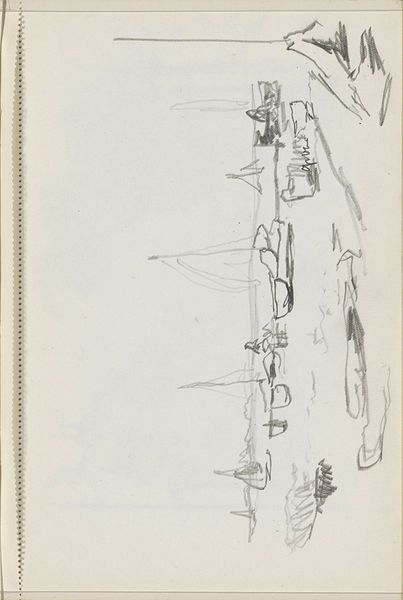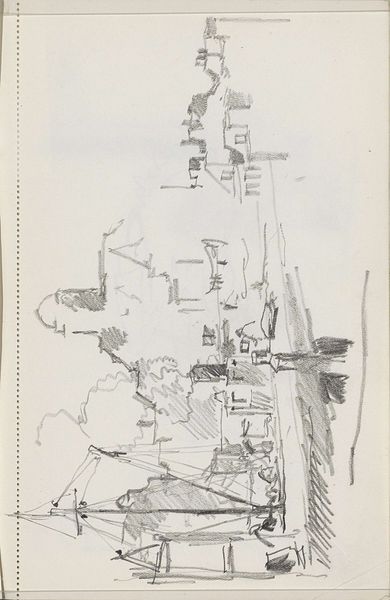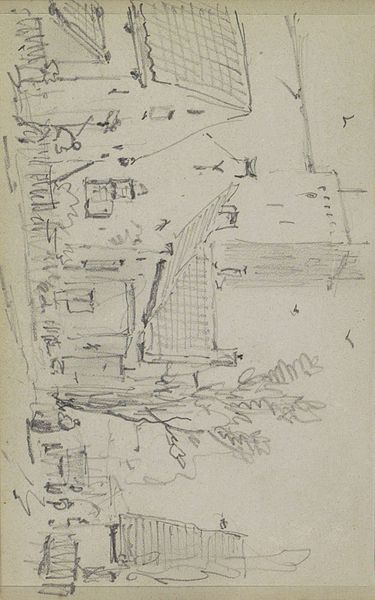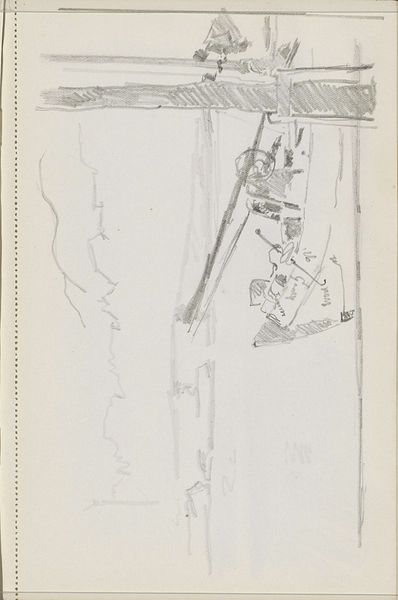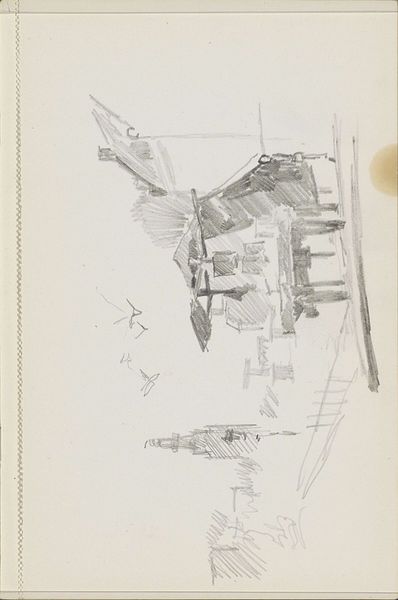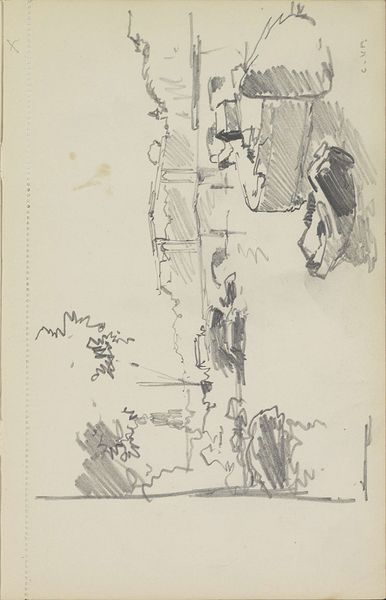
Copyright: Rijks Museum: Open Domain
Editor: So, here we have "Figuren op een drukke straat" – "Figures in a Busy Street" – by Cornelis Vreedenburgh, dated somewhere between 1890 and 1946. It's a graphite drawing on paper, currently residing at the Rijksmuseum. I’m struck by the fleeting quality of it; it feels like a captured moment, almost like a memory. What do you make of it? Curator: As a materialist, I’m drawn to the graphite itself. Consider the labor involved in producing both the material and the image. Someone had to extract and process the graphite, someone else manufactured the paper. And then Vreedenburgh, through skillful application, transformed these everyday materials into… well, what *is* it? Is it a finished artwork or a preliminary sketch? Does that distinction even matter when we consider the work that went into its production? Editor: That's interesting! I hadn't thought about the labor behind such a seemingly simple sketch. So you're focusing on the physical making rather than the impressionistic style. Curator: Precisely. The lines aren’t just representations; they’re the *result* of a specific process, of a hand moving across a surface, leaving a trace. Think about the social context. Was this made on commission? For personal study? The purpose drastically shifts our understanding of the materiality. And where do we position drawings like this within a hierarchy that historically prioritizes painting? Editor: That’s really shifted my perspective. I was focused on the Impressionistic aesthetic, the implied movement and energy. But looking at it as a product of material and labor, it does change the way you appreciate, or even critique, the artwork. I hadn't considered questioning if we are placing more value on more permanent artworks. Curator: Exactly. It’s about challenging those established values. Editor: Well, that gives me a lot to think about! Thanks for offering your insights. Curator: My pleasure. Thinking critically about materials helps us to reassess the established norms.
Comments
No comments
Be the first to comment and join the conversation on the ultimate creative platform.
